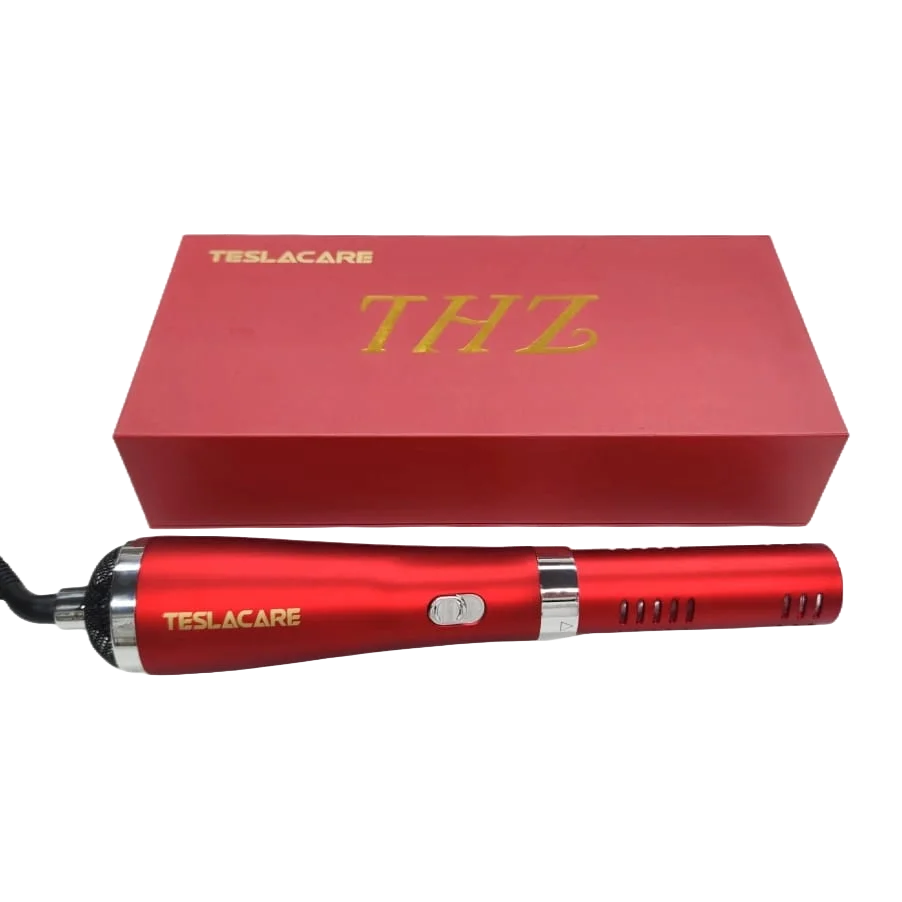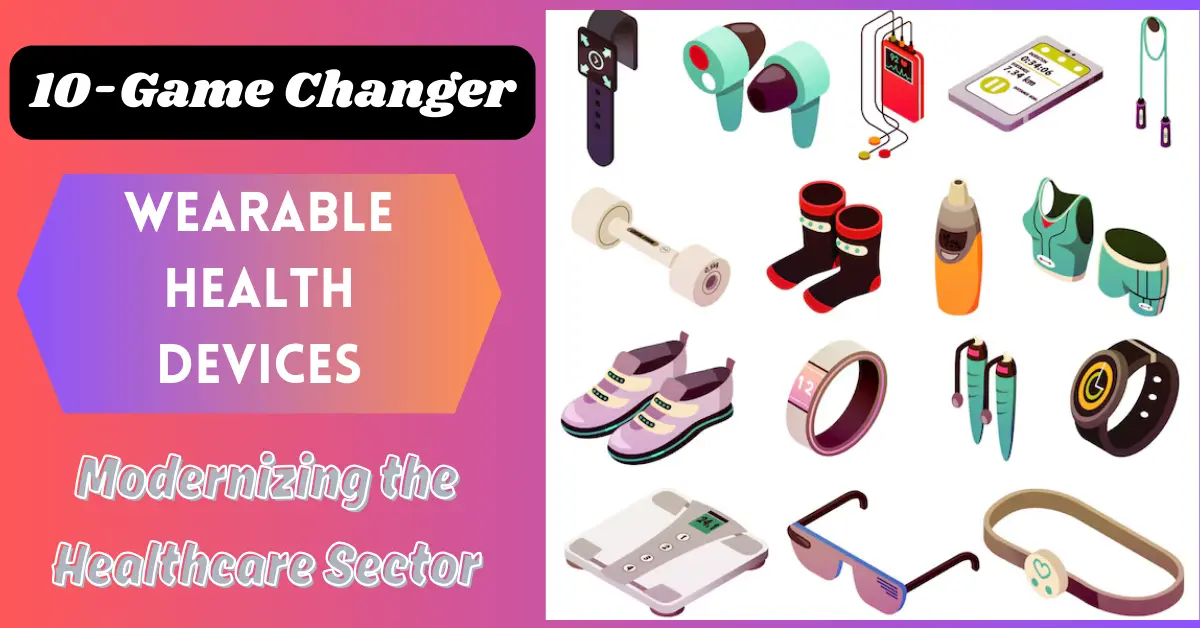Wearable health devices are transforming individual healthcare by providing a real understanding of the key health issues. These innovative gadgets constantly monitor key metrics such as heart rate, physical activity, sleep patterns, and even blood sugar levels, allowing users to make well-informed decisions related to health. The earlier time has observed a great achievement in this industry, determined by rising health consciousness, technological improvements, and the increasing addition of artificial intelligence in digital health solutions. Consequently, wearable devices are playing a significant role in precautionary healthcare, allowing users to take preemptive measures toward better quality healthcare facilities.
TeslaCare – Embrace Tomorrow’s Health Solutions

Is TeslaCare Worth It?
- Unlock Your Body’s Natural Healing Potential With Revolutionary Terahertz Technology
- TeslaCare Terahertz Devices connects cutting-edge technology to provide accurate targeting of the human body, addressing several health problems effectively. Their handheld and portable design ensures ease of use and transport, making them ideal for a wide range of environments, whether at home or on the go.
- As non-offensive solutions, these devices remove the need for injections or cuts, offering a harmless and more comfortable experience for users. Moreover, their multi-operating capabilities allow for various applications, so we appreciate you consulting your independent distributor to explore the several advantages these innovative products can provide for your health and well-being.
The growing acceptance of wearable health devices is driven by their capability to provide immediate health data, allowing users and healthcare professionals to make up-to-date decisions. With the combination of artificial intelligence AI and the Internet of Things (IoT) these devices have become more logical, manageable, and able to provide tailored health calculations. By constantly supervising key health issues and providing personalized suggestions, they promote a practical approach. As the knowledge of preemptive healthcare increases, wearable health devices are expected to play a crucial role in early signs of disease, finding, management, and overall health optimization.
What Are Wearable Health Devices?
Wearable health devices are automated gadgets that individuals wear to track and examine their health condition. These devices are introduced with advanced sensors to save physiological data such as heart rate, activity levels, and sleep habits. This information is then sent to mobile applications or cloud platforms, allowing users to evaluate their health and make well-informed decisions. The information collected is normally transferred to mobile apps or cloud platforms for additional analysis.
There are numerous wearable health devices, each designed for certain health-tracking purposes. Smart watches for women and fitness trackers are among the most common, providing features like step calculating, calorie counting, and heart rate monitoring. More advanced wearable health devices contain ECG monitors, constant glucose monitors (CGMs), and wearable blood pressure monitors. These medical-rank devices provide correct health information, which can help patients and health professionals to manage and treat symptoms like diabetes and high blood pressure efficiently.
Wearable health devices controlled by AI and machine learning algorithms to translate data and provide actionable understanding. The combination of wireless technology and cloud computing has also made it easy to sync data with healthcare systems, allowing for remote probing and telehealth apps.
What are the Crucial Advantages of Wearable Health Devices?
The increasing reputation of wearable health devices is credited to their many benefits. The crucial benefit is immediate tracking, allowing users to check vital signs and fitness levels during the day. These consistent checks help to find potential issues earlier, allowing for timely involvement and reducing the risk of chronic complications.
Another key benefit of wearable health devices is their role in boosting the healthcare routine. Many of these devices provide tailored fitness objects, prompts, and activity tracking to support users to remain active and enhance their overall health. Plus, they provide sleep tracking features that evaluate sleep patterns and provide advice for better quality of sleep.
For patients with chronic health conditions, wearable health devices offer a suitable solution to manage their health conditions. For instance, consistent glucose checks help diabetics track blood sugar levels on an immediate basis, reducing the need for regular finger-prick tests. In the same way, wearable ECG monitors can identify heartbeats and notify users to take possible action against cardiac issues before they become dangerous. These devices not only improve individual health management but also help the doctors to make more informed decisions for treatment.
What are the Most Popular Wearable Health Devices Available in the Market?
Many companies have presented cutting-edge wearable health devices that serve different health and fitness goals. Some of the most prevalent wearable health devices in the market include:
Smart-Watches: Wearable Health Devices like the Apple Watch, Samsung Watch, and Fitbit Sense provide a great collection of health-tracking features. These devices noted key metrics such as heart rate, ECG readings, blood oxygen level, and general fitness activity. By providing actual data and tailored understandings, they support users to remain up-to-date about their health, find potential problems at the beginning, and improve their fitness goals. With regular checks and balances, these wearable health devices serve as a valued asset for maintaining a healthy lifestyle.
Fitness Trackers: Popular brands like Garmin, WHOOP, and Fitbit Charge offer innovative features like movement tracking, sleep monitoring, and thorough exercise analysis. These devices help users get a detailed understanding of their daily life activity levels and exercise performance, allowing them to make wise decisions about their fitness goals. By providing immediate data and tailored responses, these devices allow an individual to set attainable goals, track growth, and optimize their overall health and wellness.
Medical-Rating Wearable: Wearable ECG monitors like Kardia-Mobile and endless sugar monitors such as the Dexcom G6 are manufactured particularly for individuals dealing with different types of health conditions. These new medical devices provide accurate data, allowing more efficient disease management and timely medication. By providing a perfect understanding of heart performance and blood sugar levels, they allow both users and doctors to make suitable decisions, eventually improving overall health results.
Sleep Trackers: Wearable health devices, such as the Oura Ring and Fitbit Sense, are meant to track sleep patterns and offer valuable insights into sleep quality. By analyzing sleep duration, heart rate variation, and movement, these wearable health devices support users in finding activities that may be disturbing their rest. With personalized recommendations and perfect data, the individual can make informed changes to improve their sleep, ultimately promoting their overall well-being.
As wearable health devices continue to advance, new models with improved features are being introduced, making health checking more convenient and effective.
How to Find Significant Qualities in Wearable Health Devices?
When choosing wearable health devices, various unique qualities should be studied to ensure maximum functionality and user-friendly experience. One of the great aspects is to find accuracy and consistency. The efficacy of wearable health devices varies in their proficiency to provide accurate and reliable data. Devices that experience clinical authorization manage to provide a higher accuracy rate.
Another analytical quality is to evaluate its battery life and endurance. Some wearable health devices need regular charging, which can be problematic for users who need nonstop tracking. Picking up a device with a long battery life can considerably boost usability.
Incorporation with smartphones and healthcare apps is also a significant consideration. Many wearable health devices sync with mobile apps to provide comprehensive visions and reports. The power to share data with healthcare experts can enhance medical sessions and treatment preparation.
Data Secrecy and Safety are increasing concerns in the wearable health devices industry. As these gadgets gather secret health information, ensuring data encryption and safe protection is important to avoid unofficial reading and violations.
What are the Roles of AI and IoT in Wearable Health Devices?
Artificial Intelligence (AI) and the Internet of Things ( IoT) have mainly boosted the competencies of wearable health devices. AI-driven algorithms investigate the compiled data to uncover patterns, calculate potential health concerns, and provide tailored advice. For example, AI-powered wearable health devices can pinpoint primary signs of heart disease by examining ECG data and informing users to seek medical care.
IoT connectivity allows wearable health devices to connect with other relevant smart devices and cloud-based platforms. This immediate data conversation improves the scheduled patient monitoring, making it convenient for health professionals to find out a patient’s health conditions without needing regular in-person visits.
With consistent developments in AI and IoT, wearable health devices are becoming more brainy, spontaneous, and effective in promoting precautionary healthcare and initial disease findings.
What are the Experiments and Restrictions of Wearable Health Devices?
Despite their several benefits, wearable health devices have some undeniable challenges and restrictions. One of the main concerns is “privacy and security”. As these devices gather and save sensitive health information, the risk of data violation and unofficial retrieval is at an extreme level. Ensuring submission with healthcare professional data safety rules is essential for manufacturing companies and users.
Another check is the accuracy of user-grade wearable health devices. While medical-grade devices are thorough, some user fitness trackers may deliver inaccurate data, leading to a conceivable misunderstanding of health metrics.
Moreover, higher prices remain the biggest concern for various individuals who want to purchase wearable health devices. Cutting-edge medical wearable devices with specific features can be costly, making them unavailable to a broader audience.
Battery life and device reliability are also problems that users face. Many wearable health devices need continuous charging, which can interrupt constant health monitoring. Additionally, dependence on these devices for health tracking can raise tension in some individuals who become too reliant on data reading.
What are the Future Trends of Wearable Health Devices?
The future trends of wearable health devices look encouraging, with uninterrupted inventions designed to boost functionality and availability. Some of the crucial trends likely to form the industry include:
Expansions in non-offensive health monitoring are changing patient care with greater well-being and suitability. Cuff-less hypertension monitors use visual sensors to track pressure consistently. These inventions improve patient compliance and provide actual data with more accuracy and preemptive healthcare management.
The Growth in AI applications is transforming healthcare by empowering devices to identify primary signs of illness with exact accuracy. The progressive algorithms examine medical data, analyzing patterns that can show conditions like cancer, diabetes, or heart attack before symptoms appear. This earlier identification enables users to receive timely treatment, boosting patient results and reducing healthcare costs. As AI consistently grows, its role in diagnostics and precautionary care will become even more crucial.
The combination of 5G and cloud computing is changing healthcare by allowing quick data transmission and improved remote care abilities. With the lowest potential and high-pace connectivity, 5G allows the actual sharing of medical data, boosting telemedicine, remote monitoring, and AI-powered findings. Cloud computing ensures safe storage and smooth access to patient records, helping cooperation between healthcare providers. Additionally, these tools boost efficacy, availability, and the overall quality of patient care.
The expansion of wearable covers and smart dressing is reforming health monitoring by providing immediate data without huge devices. These new wearable devices are inserted with the latest sensors that track key signs such as heart rate, temperature, and hydration levels effortlessly. As technology grows, these smart devices will play a key role in proactive healthcare and tailored well-being. So wearable health devices continue to progress, and their effect on precautionary healthcare and remote patient monitoring is likely to grow significantly.
Final Words
Wearable Health Devices are transforming the current healthcare system by providing immediate health tracking, promoting well-being, and allowing primary illness detection. From smartwatches and fitness trackers to medical-grade wearables, these devices provide broader benefits that improve individual health management and medical care.
As technology spreads, wearable health devices will become more advanced, providing greater accuracy rates, enhanced additions to healthcare systems, and improved AI-powered visions. Though challenges like data safety and price remain, continuing inventions are likely to resolve these issues, making wearable health devices an essential tool in the future of the healthcare industry.









